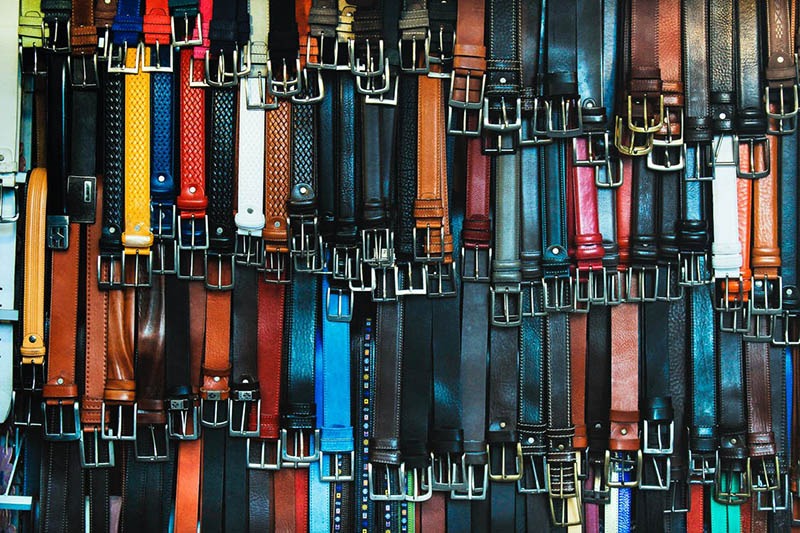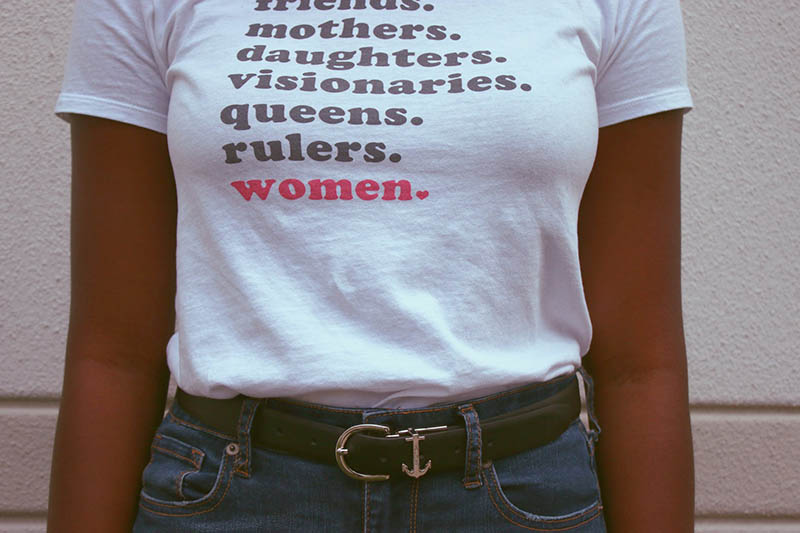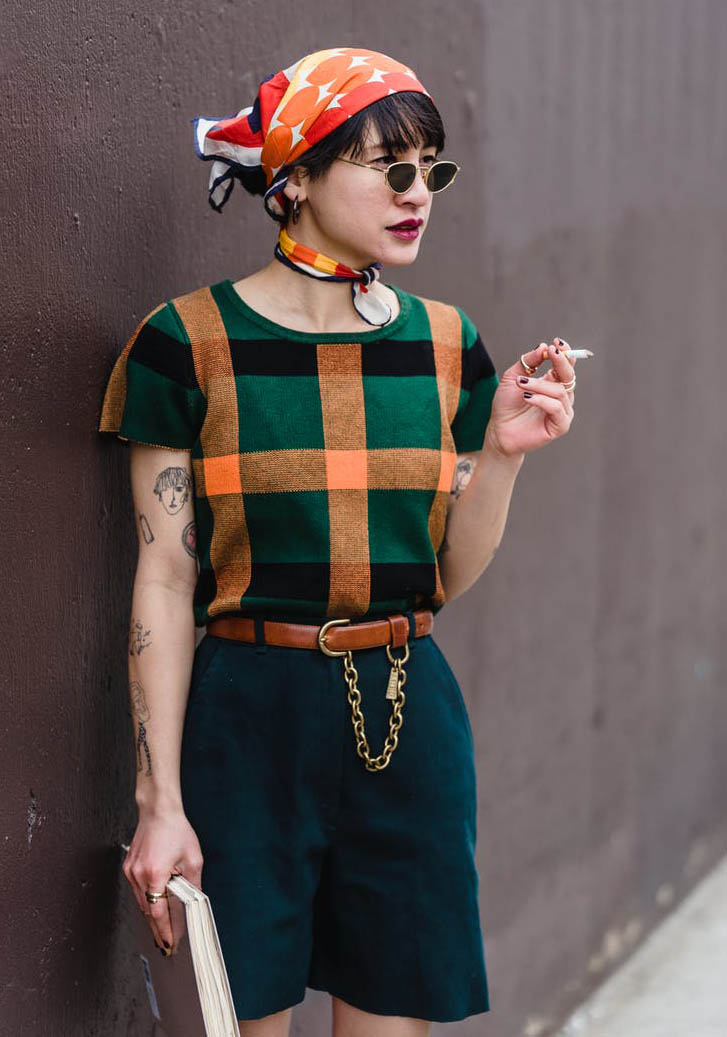Belts are more than a functional accessory; they are also the final sartorial touch that wraps up and polishes your overall outfit. A belt might be the equivalent of putting a period at the end of a phrase.
Furthermore, they can help improve the fit of a garment by adding shape; Yet, just like any other accessory, you must consider some considerations and features to pull off and incorporate a belt into your style properly.
Belts can help women’s clothing seem better by reflecting current fashion trends. However, you should not use them with just any outfit because they might make you appear over-accessorized, especially when wearing elaborate clothing. That’s why learning how to wear and match different belt types to your clothing is crucial.
Women can choose from various belt styles, ranging from different colors to materials. We will provide you with some useful guidelines to use appropriately.
This is the ultimate guide on wearing belts and looking great while doing so. Or, if you want a more comprehensive guide, this ultimate guide to fashion accessories might help.
Different Types of Belts
Knowing the many types of belts available can help you decide which one to wear for specific occasions and whether or not a particular belt style will suit your body type and personal style. Knowing the belt jargon will help you browse more efficiently and discover exactly what you’re searching for.
Classic
The standard belt is a must-have in every woman’s wardrobe, whether in brown or black. This belt is a multi-functional accessory that goes above and beyond its use.
The simplicity of this belt, with its simple buckle and design, allows it to be worn for various events. This belt will add polish to your denim and office clothes when made of high-quality leather.
But don’t stop there; why not experiment with some brightly colored belts as well? They’re ideal for adding a pop of color to a monochromatic ensemble or an LBD. Neon belts will give your classic ensembles a youthful vigor and a splash of modern appeal.
Metallic
The metallic belt is the next leap forward. Silver and gold finishes are just as adaptable and easy to dress as typical neutrals like nude, black, navy, and white. If you want to add a touch of glam to your outfit, grab a metallic belt and witness your glam shine through.
Whether you choose a wide or slim metallic belt, the piece’s adaptability stays the same. Buying a belt with a metallic component on the front is an on-trend way to wear this belt; this type of metallic belt adds structure to your overall look.
Braided or Woven
The woven or braided leather belt, traditionally a boho accessory, has made its way into more classic forms. Given its earthy design overtones, leather is the most common choice of material for this type of belt.
However, because of the ease with which this belt can be fashioned, fashionistas have found it an easy choice for styling even their preppy clothes. Over maxi dresses and flowing tunic tops, as well as more delicate items like sheath dresses and pencil skirts, this belt looks great.
If you don’t want to wear a regular belt, this is the way to go.
Statement
This belt is particularly suitable for evening occasions and can be counted on to create a strong statement. The options are numerous, from a glistening belt for glam queens to an animal print if you’re a theatrical gal and a studded belt if you’re more of a rock lady.
The trick is to select a style that fits your personality to wear it with pride.
View this post on Instagram
Skinny
Skinny belts are understated accessories that may quickly dress up and complete any ensemble. Because of its width, it’s also easy to experiment with bolder designs and brighter colors.
Because the belt is so slim, keep proportions in mind while wearing it; pair it with more fitting skirts or jeans. The belt will be drowned out by flowing and loose items, losing its elegant look.
Wide
Wide belts are another type of statement belt; each makes a distinct statement from an Obi for a touch of oriental flair to a classic wide sash or sensual corset design. A wide belt will work wonders for most waistlines and create a beautiful hourglass look.
A wide belt is your best chance for cinching in your waist while wearing empire waist items or shapeless shift dresses. Invest in a wide neutral belt you can wear with various outfits and a lively, trendy version for nights when you want to be a little funkier.
There has been a recent increase in the prevalence of Japanese-inspired fashion trends on the runways. Seasons have passed, and obi belts have grown in popularity and prominence by leaps and bounds.
The Obi is distinguished by its wide base, which acts as a base for wrapping around the narrower straps that knot in the front. Obi belts are a big trend right now, and they’re worth adding to your wardrobe.
Rope
The simple act of tying a rope around your waist screams effortless style. They’re a simple way to give your more casual outfits some shape and structure. You can tie in your rope belt in various ways, such as in the rear, the middle front, or even asymmetrically to one side.
The rope belt performs especially well in the warmer months with lighter fabrications. You can even further personalize this belt style by deciding how to tie it.
Elastic
Elasticized belts, especially those with ornate buckles, tend to look 80s-inspired. Make sure your elastic belts are a seamless part of your outfit rather than the main point to combat this. If you want to make your elasticized belt and gorgeous waist the focal point of your outfit, keep the rest of your attire simple and focus on the belt.
Fabric
Fabric belts, often known as sash belts, are another popular street fashion trend. Scarves worn as belts, hung low on the hips, or wrapped around the waist, are the epitome of cool-girl style. This insider styling tip can make you look like a fashion editor.
The Appropriate Belt to Wear
There are two categories of people in this world: carefree ladies who throw on any belt and rush out the door. On the other hand, the rest of us are frowning in front of full-length mirrors, unsure which belt (if any) looks decent on us. We finished the legwork for you and compiled a list of belts to wear and how to wear it.
If You’re Petite: Monochrome and Thin
Breaking news: instead of splitting your vertically challenged figure in half, a belt can extend it. What’s the secret? Make sure it’s slender and complements your jumpsuit, dress, or high-waisted pants in color.
Another thing to take to heart is to wear it at your natural waist to get the most out of its slimming effects. Goodbye, svelte silhouette.
If You’re Tall: Wide
Belts with a larger surface area look the best on your slim frame. While this principle applies to cinchers worn on the hips and at the waist, if you plan to wear it low-slung, you should choose a somewhat narrower belt (think one inch and a half to two inches).
If You’re an Hourglass: Wide and High
Pay particular attention to the position of your medium to a wide belt when balancing a curving physique. Whether you’re wearing a playful dress or a suit, the most attractive positioning will be just north of your natural waist, which will accentuate your curves without pressing into your hips.
What’s the one look you should avoid? Hip belts, which will, unfortunately, make you look bottom-heavy.
View this post on Instagram
If You’re Straight/Boyish: Super Slim
There aren’t any curves? No worry, because a belt can help you fool others into thinking you have hips for days. Choose the narrowest style (a chain or leather rope will suffice) and buckle it over a silky dress or a billowy blouse. To add even more volume, tie the belt around your waist and blouse the fabric up and over.
If You’re Plus/Curvy: Contrasting Colors and Loose Fit
If you believed your curves meant you had to wear flexible belts to hide your stomach, you were mistaken. A narrow belt may help draw attention to your shape, especially if you match it with a bright outfit. Just make sure your belt isn’t too tight; for the best fit, it should rest lightly on your waist.
If You Have a Short Waist: Chain or V Shape
You’ll need to draw the attention downward to provide the impression of a longer upper body. So wrap a belt over your hips and choose a V-shaped style. This technique will make your figure appear sleek and long, especially if you’re wearing a midi-length dress.
If You’ve Got a Long Waist: Big Buckle
Take advantage of the opportunity to wear a loud, quirky belt buckle. Whether you’re wearing a basic dress or a skirt and blazer, ensure your belt is placed higher on your torso to avoid adding any extra (unwanted) length.
How to Wear a Belt in Different Ways
Over a Long Tunic Shirt
Wearing a long tunic can make you look shapeless, depending on what you’re attempting to achieve with your clothing. With a belt over the top, the problem is solved.
To Bring Your Outfit’s Other Colors Together
A belt may be a terrific way to tie your entire ensemble together, whether you’re using just one accent color or multiple.
To Make Your Dress Tighter
A belt can transform a dress into a variety of appearances. It can also make a shirt dress or tunic look more fitted.
Over Your Classic Pants
Some pants can appear to be missing a key component without a belt. Wearing a belt can instantly improve the look of your clothes.
Over Your Blazer
This is a highly fashionable way to wear a blazer, and it’s ideal if you own an oversized blazer that needs to be defined.
View this post on Instagram
To Draw Attention to Your Curves
A belt is your greatest friend if you have a pear or hourglass figure because it will highlight your waist. If you’re an inverted triangle or rectangle, you can use a belt to create the illusion of a waist, and if you’re an apple shape, you may experiment with where you cinch your belt to achieve the most flattering effect.
To Emphasize Your Waist
If your waist is your best feature, a light, broad, or bright-colored belt will bring attention to it.
To Make Your Jumpsuit Tighter
If you have a jumpsuit that doesn’t fit well at the waist, try adding a belt before consigning it.
To Make Your Dress More Shaped
A belt is a terrific method to give your garment more dimension.
Combined with a Shirt and a Skirt
You may choose a belt that matches the colors in your ensemble to tie your skirt and blouse together.
View this post on Instagram
Wearing a Belt: Dos and Don’ts
Do you believe you’re ready to take on belts right now? Here are some do’s and don’ts to keep in mind before you head out with your newfound knowledge:
Do:
- Wear a belt with identical color to your dress. It will give you a more streamlined appearance.
- Make sure your belts are properly stored and cleaned. A bit of extra caution and care goes a long way toward extending the life of your accessories.
- Use belts to make curves and shapes. If only for this reason, belt phobia is worth overcoming.
- Get vivid and colorful when shopping for belts. It’s a fantastic method to liven up your more basic pieces.
- Flaunt your belt. Make your wonderful accessory and your amazing physique the center of attention.
- Organize your closet and replace “out of style” belts yearly.
Don’t:
- Curl or fold your belts tightly when storing them.
- Make all of your accessories match the color of your belt.
- Don your belt too tight.
- Be scared of wearing your belt over your cover-up or cardigan if you want to. It’s a fun and fashionable way to add shape to your outerwear.
- Let other huge or showy accessories overshadow a statement belt.
- Wear lighter belt fabrications (rope, cloth) for the colder weather. Leather is suitable for all seasons.
- Be scared to pair an equally exciting and fantastic belt with your outgoing personality.
- Fear belts. Say no more to belt phobia!




